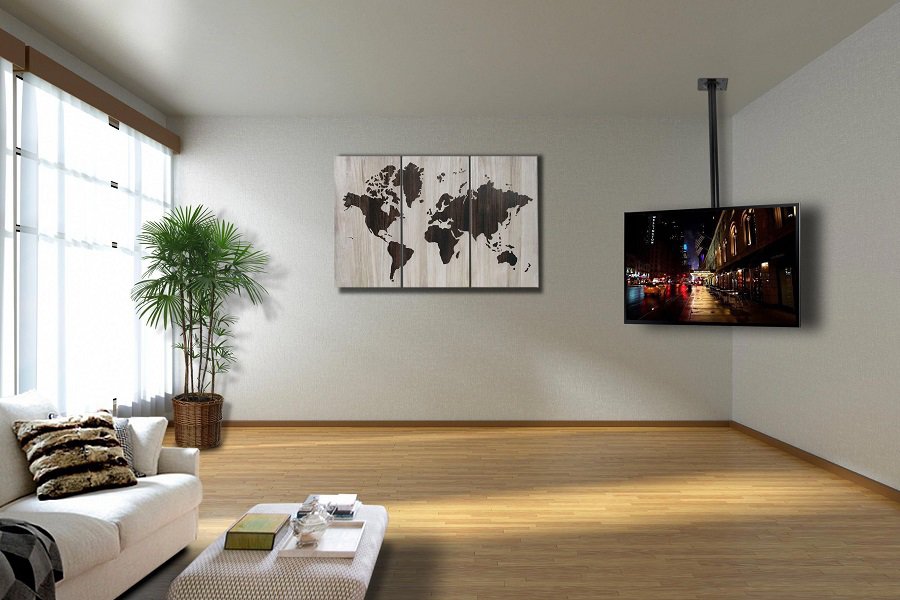As televisions evolve to offer sleeker designs and larger screens, choosing the right TV mount has become essential for both aesthetics and functionality. Whether you own a compact 32-inch TV or a cinematic 85-inch display, selecting the ideal mount ensures safety, optimal viewing, and seamless integration into your living space. Here’s a comprehensive guide to navigating the world of TV mounts.
Understanding TV Mount Types
-
Fixed Mounts
-
Designed to hold TVs flush against the wall, fixed mounts offer a clean, low-profile look. Ideal for spaces where viewers sit directly in front of the screen, they’re perfect for smaller to mid-sized TVs (up to 65 inches).
-
-
Tilting Mounts
-
These mounts allow vertical angle adjustments (typically 5–15 degrees), making them suitable for TVs mounted above eye level (e.g., over fireplaces). They support medium to large TVs (40–85 inches) and reduce glare by tilting the screen downward.
-
-
Full-Motion (Articulating) Mounts
-
Offering maximum flexibility, full-motion mounts extend, swivel, and tilt. Ideal for open-concept rooms or bedrooms, they accommodate TVs of all sizes and let viewers adjust the screen angle from multiple seating areas.
-
-
Ceiling Mounts
-
A niche option for commercial spaces or rooms with limited wall space, ceiling mounts suspend TVs vertically. They’re best for smaller screens (under 55 inches) and require sturdy ceiling beams for installation.
-
Matching Mounts to TV Size
-
Small TVs (Under 32 inches): Lightweight fixed or tilting mounts work well. Ensure compatibility with VESA patterns (the standardized screw hole layout on the TV’s back).
-
Medium TVs (40–55 inches): Opt for tilting or mid-range full-motion mounts. Check weight capacity (most medium TVs weigh 25–50 lbs).
-
Large TVs (65–85 inches): Heavy-duty full-motion or reinforced tilting mounts are critical. Verify that the mount supports both the TV’s weight (often 60–100+ lbs) and VESA dimensions (e.g., 400x400 mm or larger).
-
Extra-Large TVs (85+ inches): Commercial-grade mounts with robust brackets and dual-wall stud anchoring are mandatory. Consult a professional installer for safety.
Key Considerations for Installation
-
Wall Material
-
Drywall: Use toggle bolts or metal anchors for lighter TVs. For heavier models, secure the mount to wall studs.
-
Concrete/Brick: Masonry anchors or concrete screws are essential.
-
-
Viewing Height
-
Position the TV’s center at eye level when seated (42–48 inches from the floor). Tilting mounts help compensate for higher placements.
-
-
Cable Management
-
Choose mounts with built-in cable channels or pair them with cord covers to maintain a clutter-free look.
-
-
Future-Proofing
-
Select a mount rated for a higher weight/size than your current TV to accommodate potential upgrades.
-
Expert Tips for a Flawless Setup
-
Measure Twice, Drill Once: Confirm your TV’s VESA pattern, weight, and dimensions before purchasing a mount.
-
Test the Range: For full-motion mounts, ensure the arm’s extension and swivel range suit your room layout.
-
Prioritize Safety: When in doubt, hire a professional installer—especially for large or complex setups.
Final Thoughts
“The right TV mount enhances your viewing experience while protecting your investment,” says home entertainment expert Laura Simmons. “By aligning your TV’s size, room dynamics, and mounting features, you can achieve a setup that’s both stylish and functional.”
From minimalist fixed designs to versatile articulating arms, today’s TV mounts cater to every screen size and lifestyle. By following this guide, you’ll transform your space into a personalized home theater—no guesswork required.
Post time: Mar-20-2025


